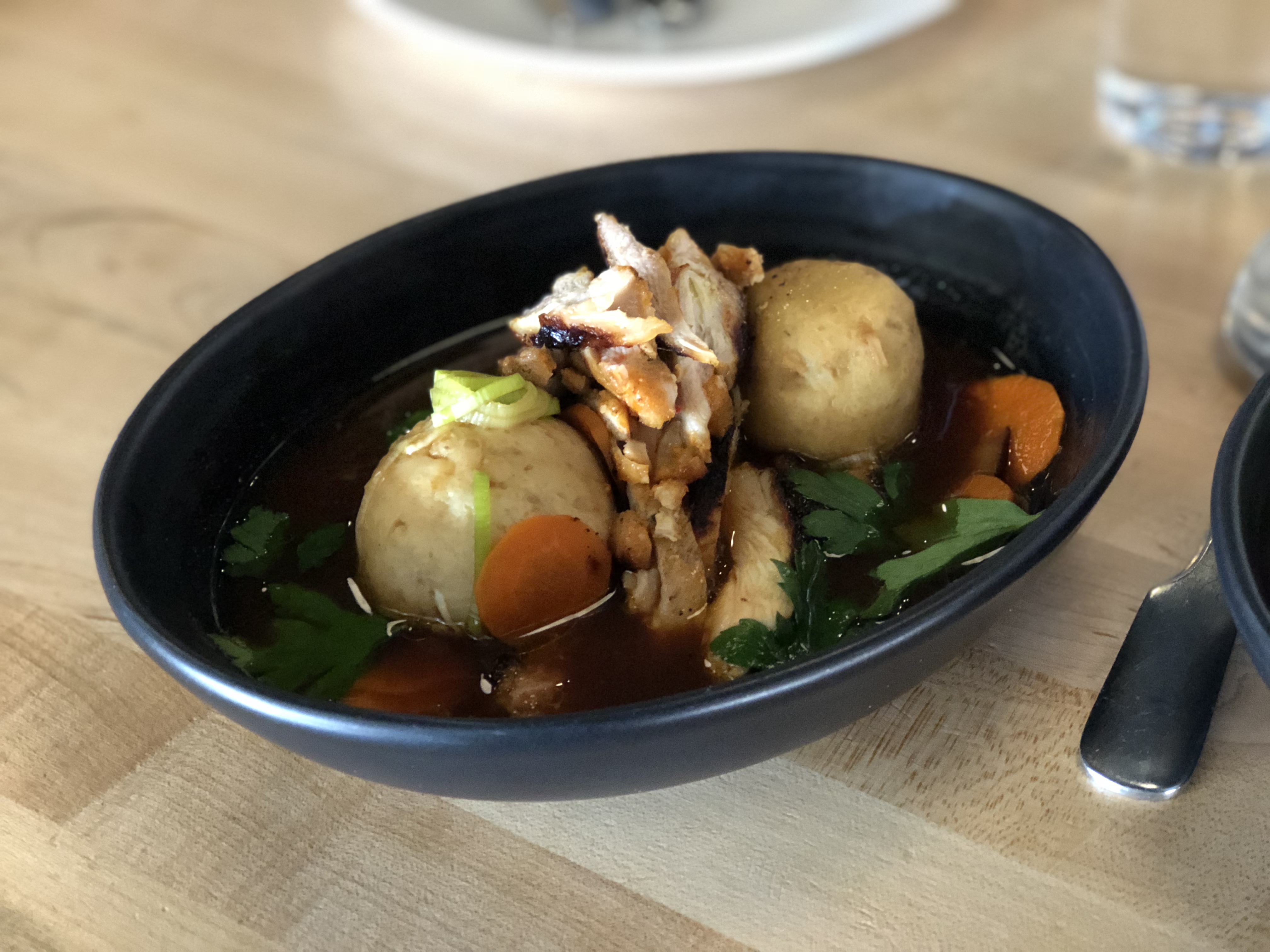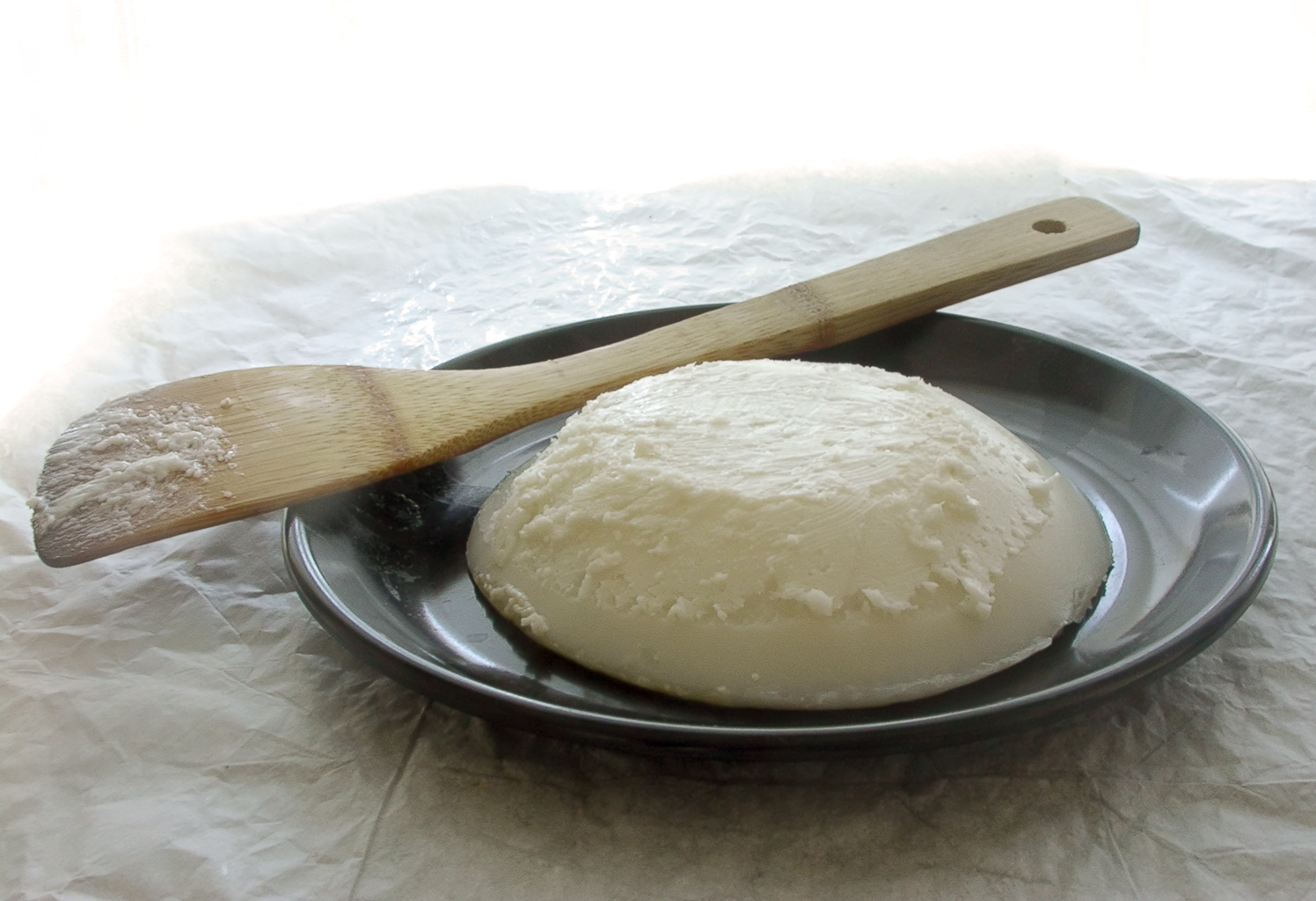|
Schmaltz
Schmaltz (also spelled schmalz or shmalz) is rendered (clarified) chicken or goose fat. It is an integral part of traditional Ashkenazi Jewish cuisine, where it has been used for centuries in a wide array of dishes, such as chicken soup, latkes, matzah brei, chopped liver, matzah balls, fried chicken, and many others, as a cooking fat, spread, or flavor enhancer. Etymology The noun ''Schmaltz'' is derived from the German verb 'to melt', from the West Germanic root , modern English ''to smelt''. It entered English through Yiddish-speaking Ashkenazi Jews who used to refer to kosher poultry fat; the Yiddish word refers to rendered chicken fat. The English term ''schmaltz'' is derived from Yiddish and is cognate with the German term , which can refer to any rendered fat of animal origin, including lard (more precisely ) and clarified butter (); though according to German law, must exclusively refer to a lard-based product in a commercial context. English use ten ... [...More Info...] [...Related Items...] OR: [Wikipedia] [Google] [Baidu] |
Jewish Cuisine
Jewish cuisine refers to the worldwide cooking traditions of the Jewish people. During its evolution over the course of many centuries, it has been shaped by Jewish dietary laws (''kashrut''), Jewish festivals and holidays, and traditions centred around Shabbat. Jewish cuisine is influenced by the economics, agriculture, and culinary traditions of the many countries where Jewish communities have settled and varies widely throughout the entire world. The history of Jewish cuisine begins with the cuisine of the ancient Israelites. As the Jewish diaspora grew, different styles of Jewish cooking developed. The distinctive styles in Jewish cuisine vary according to each community across the Ashkenazi, Sephardi, and Mizrahi diaspora groupings; there are also notable dishes within the culinary traditions of the standalone significant Jewish diaspora communities from Greece, Iran, and Yemen. Since the establishment of the State of Israel in 1948, and particularly since the late 19 ... [...More Info...] [...Related Items...] OR: [Wikipedia] [Google] [Baidu] |
Ashkenazi Jewish Cuisine
Ashkenazi Jewish cuisine is an assortment of Traditional food, cooking traditions that was developed by the Ashkenazi Jews of Central Europe, Central, Eastern Europe, Eastern, Northwestern Europe, Northwestern and Northern Europe, Northern Europe, and their descendants, particularly in the United States and other Western world, Western countries. Ashkenazi Jewish foods have frequently been unique to Ashkenazi Jewish communities, and they often consist of local ingredients (such as beets, cabbage, and potato). While these ingredients tended to be the same as those in local or neighbouring Gentile, non-Jewish communities, the preparation methods were very different due to ''kashrut'', which was historically enforced by a law, and a history of limited interaction between Ashkenazi Jews and non-Jews. The cuisine is largely based on ingredients that were affordable to the historically poor Ashkenazi Jewish community of Europe, and it is frequently composed of ingredients that were rea ... [...More Info...] [...Related Items...] OR: [Wikipedia] [Google] [Baidu] |
Matzah Balls
Matzah balls or matzo balls are Ashkenazi Jewish soup morsels made from a mixture of matzah meal, beaten eggs, water, and a fat, such as oil, margarine, or schmaltz, chicken fat. Known as knaidel in Yiddish ( pl., singular ; with numerous other transliterations), they resemble a matzah meal version of Knödel, bread dumplings popular throughout Central European cuisine, Central European and East European cuisine. Matzah balls are traditionally served in chicken soup and are a staple food on the Jewish holiday of Passover. However, they are not eaten during Passover by those who observe gebrochts, a prohibition on soaking matzah products. The texture of matzah balls may be light or dense, depending on the recipe. Matzah balls made from some recipes float in soup; others sink. Transliterations of knaidel Although there are official transliterations of Yiddish words into English by the YIVO Institute, there are many non-standard transliterations. Alternate transliterations of the ... [...More Info...] [...Related Items...] OR: [Wikipedia] [Google] [Baidu] |
List Of English Words Of Yiddish Origin
This is a list of words that have entered the English language from the Yiddish language, many of them by way of American English. There are differing approaches to the romanization of Yiddish orthography (which uses the Hebrew alphabet); thus, the spelling of some of the words in this list may be variable (for example, is a variant of , and , ). Background Yiddish is a Germanic language, originally spoken by Jews in Central and later Eastern Europe, written in the Hebrew alphabet, and containing a substantial substratum of Hebrew words as well as numerous loans from Slavic languages. For that reason, some of the words listed originated in Hebrew or Slavic languages, but have entered English via Yiddish. Yiddish is closely related to modern German, and many Yiddish words have German cognates; in some cases it is difficult to tell whether a particular word was borrowed from Yiddish or from German. Yiddish is written in the Hebrew alphabet, and Yiddish words may be translitera ... [...More Info...] [...Related Items...] OR: [Wikipedia] [Google] [Baidu] |
Chopped Liver
Chopped liver (, ''gehakte leber'') is a liver pâté popular in Ashkenazi Jewish cuisine. This dish is a common menu item in kosher Jewish delicatessens in Britain, Canada, South Africa, Argentina and the United States. Preparation and serving The dish is often made by sautéing or broiling liver and onions, adding hard-boiled eggs, salt and pepper, and grinding that mixture. The liver used is generally veal, beef, or chicken. The quintessential fat used is schmaltz, but different methods and materials exist, and the exact process and ingredients may vary from chef to chef. Chopped liver is often served on matzah, or with rye bread as sandwiches. File:כבד קצוץ.jpg, Chopped liver File:Chopped liver.jpg, A chopped liver meal on bagels with sour cream herring and onions Variations and alternatives Chopped liver is high in protein, but also high in fat and cholesterol. There are low-fat, mock and vegetarian alternatives, often made of a combination of peas, l ... [...More Info...] [...Related Items...] OR: [Wikipedia] [Google] [Baidu] |
Matzah Brei
Matzah brei ( ''matse bray'', literally 'matzah porridge'; , ''matzah brei'', or , ''matzah metugenet'', literally, "fried matzah"), sometimes spelled matzah brie, matzoh brei, or matzo brei, is a dish of Ashkenazi Jewish origin made from matzah fried with eggs. It is commonly eaten as a breakfast food during the Jewish holiday of Passover. It can be prepared either sweet or savory. Etymology The Yiddish term מצה ברײַ ''matse bray'' literally means 'matzah porridge'; ברײַ ''bray'' 'porridge' is descended from a Middle High German word ''brī'' of the same meaning. History Gil Marks in his ''Encyclopedia of Jewish Food'' asserts that matzah brei as a fried matzah-and-egg dish originated in North America. He notes the publication of a recipe for "Fried Matzos", consisting of soaked whole matzah fried in butter or schmaltz, in ''The Jewish Manual'' (London, 1846). However, egg-based recipes began to be published in early Jewish-American cookbooks, including ''Aunt Babett ... [...More Info...] [...Related Items...] OR: [Wikipedia] [Google] [Baidu] |
Kitchen Rendering
Rendering is a process that converts waste animal tissue into stable, usable materials. Rendering can refer to any processing of animal products into more useful materials, or, more narrowly, to the rendering of whole animal fatty tissue into purified fats like lard or tallow. Rendering can be carried out on an industrial, farm, or kitchen scale. It can also be applied to non-animal products that are rendered down to pulp. The rendering process simultaneously dries the material and separates the fat from the bone and protein, yielding a fat commodity and a protein meal. Input sources In animal products, the majority of tissue processed comes from slaughterhouses, but also includes restaurant grease, butcher shop trimmings, and expired meat from grocery stores. This material can include the fatty tissue, bones, and offal, as well as entire carcasses of animals condemned at slaughterhouses and those that have died on farms, in transit, etc. The most common animal sources are beef ... [...More Info...] [...Related Items...] OR: [Wikipedia] [Google] [Baidu] |
Chicken Fat
Chicken fat is fat obtained (usually as a by-product) from chicken rendering and processing. Of the many animal-sourced substances, chicken fat is noted for being high in linoleic acid, an omega-6 fatty acid. Linoleic acid levels are between 17.9% and 22.8%. It is a common flavoring, additive or main component of chicken soup. It is often used in pet foods, and has been used in the production of biodiesel. One method of converting chicken fat into biodiesel is through a process called supercritical methanol treatment. Culinary uses Most uses for chicken fat come after its rendering process. The rendering process can be done several ways but the most common is by putting it in a pan to melt. Rendered chicken fat is also referred to as schmaltz. Once rendered, it can be used similarly to oil or butter in a pan or it can be whipped for spreading. Nutrition Chicken is a source of protein, and chicken fat is another important nutrient in chicken. Chicken skin is mainly unsatur ... [...More Info...] [...Related Items...] OR: [Wikipedia] [Google] [Baidu] |
Latkes
A latke ( ''latke''; sometimes romanized ''latka'', lit. "pancake") is a type of potato pancake or fritter in Ashkenazi Jewish cuisine that is traditionally prepared to celebrate Hanukkah. It is commonly eaten in Israel and the Jewish diaspora where it is known as (romanized ''levivot'', lit. "little hearts") and has many variations. Etymology The word comes from the Yiddish ', itself from the East Slavic ', a diminutive of ' 'small fried pancake', which in turn is from Hellenistic Greek ἐλάδιον ''eládion'', '(olive) oil', diminutive of Ancient Greek ἔλαιον ''élaion'', 'oil'.''Oxford English Dictionary'', 3rd edition, December 2019, 's.v.'' https://www.oed.com/view/Entry/106171/ref> Its Modern Hebrew name, ' ( ''levivá''), plural ''levivot'', is a revival of a word used in the Book of Samuel to describe a dumpling made from kneaded dough, part of the story of Amnon and Tamar. Some interpreters have noted that the homonym ' ( ''leváv'') means "heart", a ... [...More Info...] [...Related Items...] OR: [Wikipedia] [Google] [Baidu] |
Lard
Lard is a Quasi-solid, semi-solid white fat product obtained by rendering (animal products), rendering the adipose tissue, fatty tissue of a domestic pig, pig.Lard entry in the online ''Merriam-Webster Dictionary''. Accessed on 2020-07-05. It is distinguished from tallow, a similar product derived from fat of cattle or sheep. Lard can be rendered by steaming, boiling, or dry heat. The culinary qualities of lard vary somewhat depending on the origin and processing method; if properly rendered, it may be nearly odorless and tasteless.E. S. Clifton, Joseph Kastelic, and Belle Lowe (1955): ''Relationships between Lard Production Methods, Volumes of Production, Costs and Characteristics of Lard Produced in Selected Packing Plants''. Research Bulletin 422, Iowa State College Experiment Station, US Department of Agriculture. ... [...More Info...] [...Related Items...] OR: [Wikipedia] [Google] [Baidu] |
Polish Jews
The history of the Jews in Poland dates back at least 1,000 years. For centuries, Poland was home to the largest and most significant Jews, Jewish community in the world. Poland was a principal center of Jewish culture, because of the long period of statutory toleration, religious tolerance and Qahal, social autonomy which ended after the Partitions of Poland in the 18th century. During World War II there was a nearly complete genocide, genocidal destruction of the Polish Jewish community by Nazi Germany and its collaborators of various nationalities, during the German occupation of Poland between 1939 and 1945, called the Holocaust. Since the fall of communism in Poland, there has been a renewed interest in Jewish culture, featuring an annual Jewish Culture Festival, new study programs at Polish secondary schools and universities, and the opening of Warsaw's Museum of the History of Polish Jews. From the founding of the Kingdom of Poland (1025–1385), Kingdom of Poland in 10 ... [...More Info...] [...Related Items...] OR: [Wikipedia] [Google] [Baidu] |






